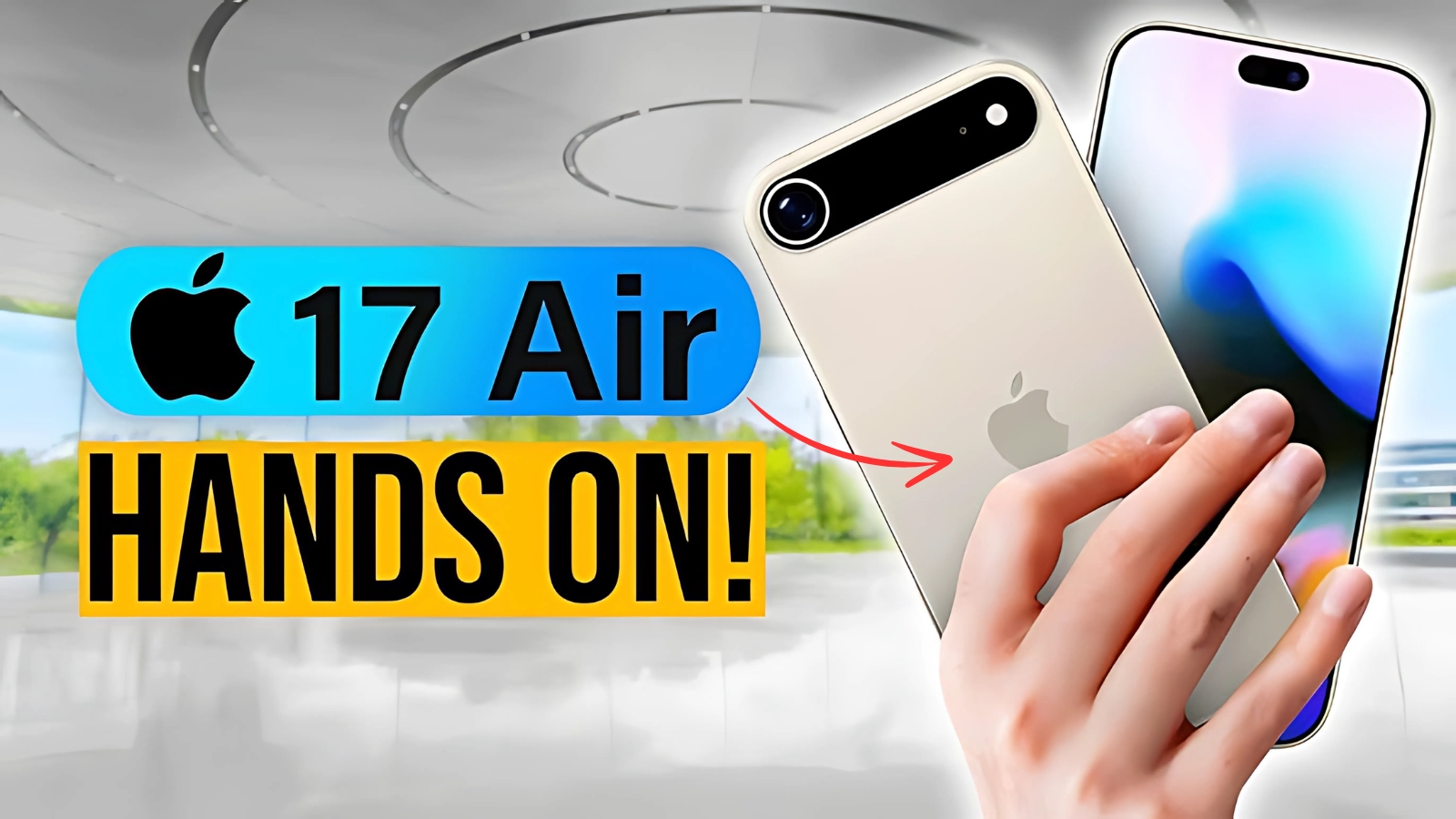iPhone 17 Air : Every few years, Apple does something that makes you scratch your head initially, then realize later they were completely right. Remember when everyone mocked the removal of the headphone jack? Or when critics called the first iPhone too expensive and impractical? The iPhone 17 Air feels like one of those moments – a device so radically different that it will either flop spectacularly or redefine what smartphones can be.
Walking into any phone store today, you’ll notice something depressing: almost every device looks identical. Same camera bumps, same thickness, same boring rectangles of glass and metal. Apple appears ready to shatter that monotony with something genuinely different, even if it means alienating customers who just want “more of the same but slightly better.”
The leaked images and dummy units circulating online show a device that doesn’t look like anything else on the market. At 5.5mm thick, it’s not just thin – it’s impossibly thin. This isn’t about incremental improvement; it’s about completely reimagining what a phone should be.
Engineering Magic Meets Reality
Building something this thin requires throwing out the traditional smartphone playbook entirely. Apple couldn’t just shrink existing components – they had to create entirely new internal architectures, custom batteries, and innovative cooling solutions that have never been attempted at this scale.
The titanium frame choice becomes obvious when you consider the structural challenges. Any flexibility in a device this thin could result in catastrophic failure during normal use. The horizontal camera bar isn’t just aesthetic – it’s likely structural, distributing stress across the device’s width rather than concentrating it at weak points.(iPhone 17 Air)
But here’s what worries me: physics doesn’t care about marketing timelines. Creating something this thin while maintaining reliability requires compromises that might not become apparent until millions of devices are in daily use. Apple’s testing is thorough, but real-world usage always reveals unexpected issues.
The Battery Reality Check
Let’s address the elephant in the room – battery life will suffer. Reports suggest capacity below 3,000mAh, which sounds terrifying in 2025 when even budget phones pack bigger batteries. Apple insists their new Adaptive Power Mode in iOS 26 will compensate, but that’s essentially asking software to perform miracles.
During my conversations with industry insiders, the consensus seems to be that Apple tested this extensively and found “acceptable” performance for target users. But “acceptable” varies wildly between someone who checks email occasionally and someone who relies on their phone for work, entertainment, and everything in between.
The honest truth is that heavy users will probably hate this device initially. If you’re constantly streaming videos, playing games, or using navigation for hours, the iPhone 17 Air might leave you stranded with a dead battery by afternoon. Light users focused on calls, messages, and basic apps might never notice the limitation.

iPhone 17 Air Single Camera Simplicity
Removing two cameras feels like a massive downgrade until you see how clean the design becomes. That horizontal camera bar creates visual harmony that multi-camera systems never achieve. Sometimes removing features improves the overall experience, even if it looks like a step backward on paper.
Photography enthusiasts will grumble about losing optical zoom and ultrawide capabilities, but most people rarely use those features anyway. The single 48MP camera will need to work harder, but Apple’s computational photography has become sophisticated enough to handle most situations effectively.
The real winner here might be the upgraded 24MP front camera. For a generation that lives on FaceTime and takes more selfies than landscape photos, this prioritization makes perfect sense, even if it seems backwards to traditional camera reviewers.
Performance Meets Physics
The A19 chip should deliver excellent performance within thermal constraints. Apple’s silicon team has worked miracles with efficiency improvements, making flagship performance in ultra-thin devices more feasible than ever. Still, physics matters – there’s simply less room for heat dissipation in such a thin device.
Expect normal usage to feel flagship-fast, but sustained intensive tasks might trigger more aggressive throttling than we’re accustomed to in regular iPhones. Gaming sessions or video editing might hit thermal limits quickly, though most users won’t encounter these scenarios regularly.
The 8GB RAM feels adequate for current needs, though I wonder if Apple considered 12GB given the premium pricing and forward-looking nature of this device. Memory optimization becomes crucial when you can’t rely on abundant RAM to brute-force smooth performance.
Premium Pricing for Premium Innovation
At $899, the Air slots between standard and Pro models, suggesting Apple views this as a lifestyle device rather than a mainstream option. You’re paying for the engineering achievement and aesthetic appeal more than additional functionality compared to cheaper models.
The sophisticated color options – black, white, light blue, and light gold – target fashion-conscious buyers rather than spec-focused enthusiasts. Apple clearly envisions buyers choosing this device for how it makes them feel rather than what it can do that other phones cannot.
Software Designed for the Hardware
iOS 26’s Liquid Glass interface should complement the ultra-thin hardware beautifully. The translucent design elements and refined animations will showcase the display quality while creating visual consistency with the premium aesthetic.(iPhone 17 Air)
The 6.6-inch display benefits from improved multitasking features and enhanced AI capabilities, while ProMotion support brings 120Hz smoothness to a non-Pro model for the first time. Apple has clearly designed the software to highlight the hardware’s strengths.
iPhone 17 Air : A Device That Divides Opinion
The iPhone 17 Air will succeed or fail based on whether consumers prioritize form over function. If people genuinely want impossibly thin devices despite battery and camera compromises, this could transform the industry. If functionality trumps aesthetics, it might become an expensive experiment that influences future designs without achieving commercial success.
Either way, it’s exciting to see Apple taking genuine risks again. The smartphone industry desperately needs something to break the cycle of predictable upgrades, and the iPhone 17 Air might be exactly that catalyst.
